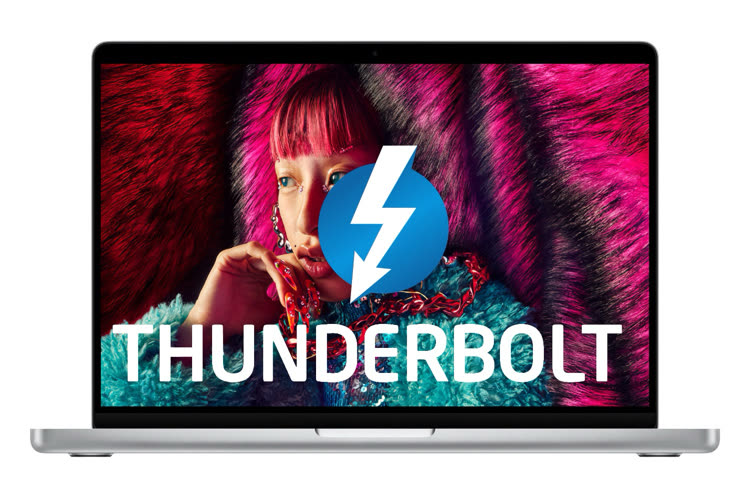
The 14-inch MacBook Pro M3 is only Thunderbolt 3 due to a ridiculous limitation
If you go to the page Which lists the specifications of the new MacBook Pros, you may have seen one thing: the new model equipped with the M3 chip only has two Thunderbolt ports (compared to three in the other versions) but above all, it is about “Thunderbolt / USB4” ports rather than “Thunderbolt / USB4” ports. Thunderbolt 4″. If this name may seem strange, it is not: it is associated with somewhat artificial restrictions from Apple.
Technically, the two sockets on the M3 are no slower than the M3 Pro and M3 Max. It allows 40 Gb/s in USB4 and 40 Gb/s in Thunderbolt (32 Gb/s for data) and the majority of the functionality is there. The reason behind this somewhat strange name change is actually the same since the launch of Apple Silicon’s Macs: to be able to put the name “Thunderbolt 4” on a product, you have to respect some rules. One of these rules is the ability to manage two monitors on one port.
Here’s the problem: For purely marketing reasons, the M1, M2, and M3 chips only manage two displays. This is a technical limit on paper, but since Apple develops chips from the ground up, it’s an arbitrary choice made during development to split the domains. Since all portable Macs include a display, they only support one external display… and therefore cannot receive the Thunderbolt 4 logo. The problem is almost the same in the case of Mac minis, with a slight difference: the Mac mini M1 is “ Thunderbolt / USB4 ” While the Mac mini M2 is Thunderbolt 4. The reason is again a point of detail: If the M1 model can accommodate two displays, you have to pass through an HDMI socket for one of the two displays, so the Thunderbolt sockets only accept one display. In the case of the M2 chip, this limitation has been eliminated: it is possible to connect two displays to the same Thunderbolt socket.
This point of detail actually illustrates the weakness that still exists at Apple: I/O management. The most recent example comes from USB 3.2 Gen 2×2, which allows 20 Gb/s speed: the standard is not compatible with the Mac M1 and M2 and Apple has not done so probably This point has not been modified with the M3. Unfortunately for Mac users, SSD manufacturers are increasingly incorporating this standard into their products, as is the case with the recent Crucial X10 Pro external SSDs. Furthermore, Apple Silicon Macs are still a bit behind in USB4 or Thunderbolt performance compared to Intel Macs. Perhaps the lack of communication in this sense means that Apple has not yet been able to correct this point (we hope we are wrong).
We tested the Crucial X9 Pro and X10 Pro, two compact and fast external SSDs

“Incurable web evangelist. Hipster-friendly gamer. Award-winning entrepreneur. Falls down a lot.”
